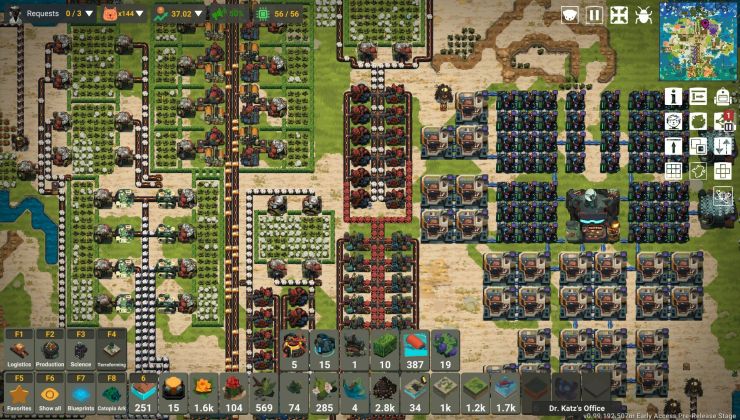Collabora put out a fresh technical blog post today to talk a little about virglrenderer, with the latest version 0.8.0 (released recently) enabling a big leap for accelerated OpenGL within a virtual machine.
The work they talk about, which Collabora took the lead on this dev cycle with help from Google Chrome OS team, is aimed at essentially creating a virtual 3D GPU for use in QEMU virtual machines (more on that here). Quite a different approach to GPU Passthrough!
As an example of it, they showed off multiple Linux games using QEMU with virglrenderer. These include: Tomb Raider 2013, Alien Isolation, Outlast, Metro Last Light Redux, The Talos Principle Legacy, Shadow Warrior and Portal in the below video that went up today:

Direct Link
Of course, it's nowhere near done and work continues on performance especially for newer and more demanding games. However, the possibilities that work like this could enable are quite exciting don't you think?
See their blog post on it here for the full tech details and another video showing off an alternative method. I'll admit some of the finer points are a little lost of me right now, as I've not followed any of this until today. As always, it's a learning process and hopefully some will find this news tip interesting—I certainly did.
But the problem I have with it is that it does ONLY work locally.
Until virgl does not work remotely over SPICE it is useless for ME - but I clearly see the advantage for developers.
Last edited by johndoe on 29 Aug 2019 at 9:22 am UTC
What I really want to see is DirectX 11 support for Windows guests with a virtual GPU, so that Easy Anti-Cheat protected games can be played on Linux.
Last edited by Xaero_Vincent on 28 Aug 2019 at 10:44 pm UTC
[Actually, if I read correctly, this is indeed something that might become possible (or at least more easily possible).
(also, I'm not sure exactly what you mean by SPICE, which to me was always integrated circuit logic simulation software, but a bit of googling tells me it might be some remote virtual machine access software....so I'm guessing you mean that).
I mean the "virtual machine access" software which runs over the SPICE protocol - mainly developed by Redhat (soon IBM).
I use it on a daily basis for my work and it is incredibly useful.
You can simply drag and drop files from your linux desktop into the SPICE client window and the file lands on your windows VM desktop - very usefull and works vice versa.
With SPICE there are also no barriers when it comes to virtual desktop resolution (qxl driver and spice-vdagent installed in guest). You can have a virtual desktop of 859x736 (for example) in size if you want - simply resize the window.
I know of NO other client that can do this.
In my opinion SPICE could BE the MS-RDP KILLER, but the guys at Redhat are simply blind or stupid.
Last edited by johndoe on 29 Aug 2019 at 9:23 am UTC
Ooo, this is really sweet. Yes, SPICE would be a fantastic next step. Imagine Raspberry Pi as a thin client... I guess Steam Link is the same thing. Still, it would still be very useful to me if it was local only. I run VirtualBox and libvirtd locally to tinker with stuff besides my dedicated hypervisor.
I don't know if SPICE is supported by the VirtualBox hypervisor but for sure with XEN and KVM.
Here you can read more about SPICE and it's features...
https://www.spice-space.org/features.html






 How to set, change and reset your SteamOS / Steam Deck desktop sudo password
How to set, change and reset your SteamOS / Steam Deck desktop sudo password How to set up Decky Loader on Steam Deck / SteamOS for easy plugins
How to set up Decky Loader on Steam Deck / SteamOS for easy plugins
See more from me